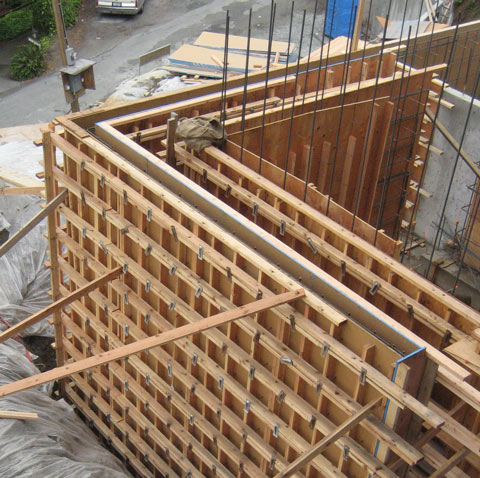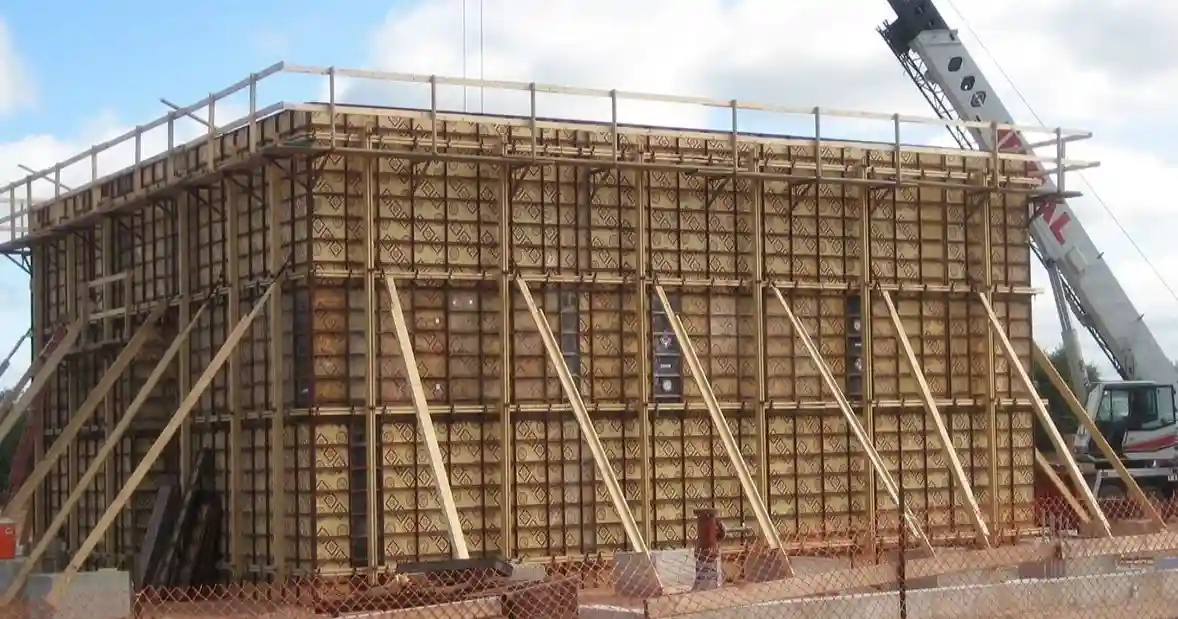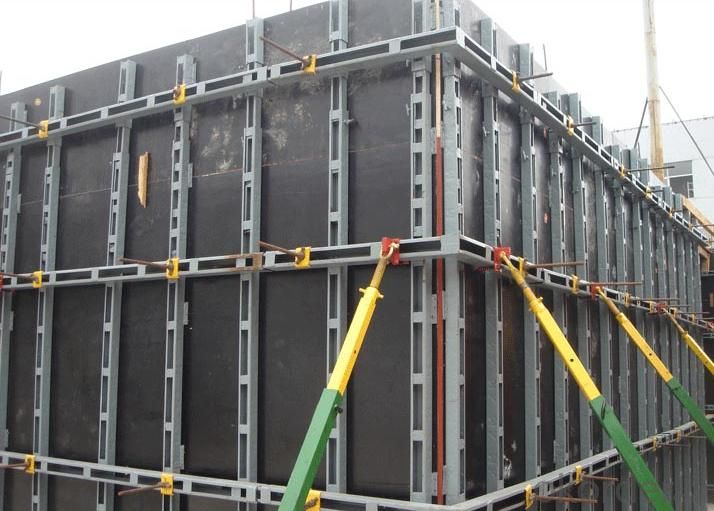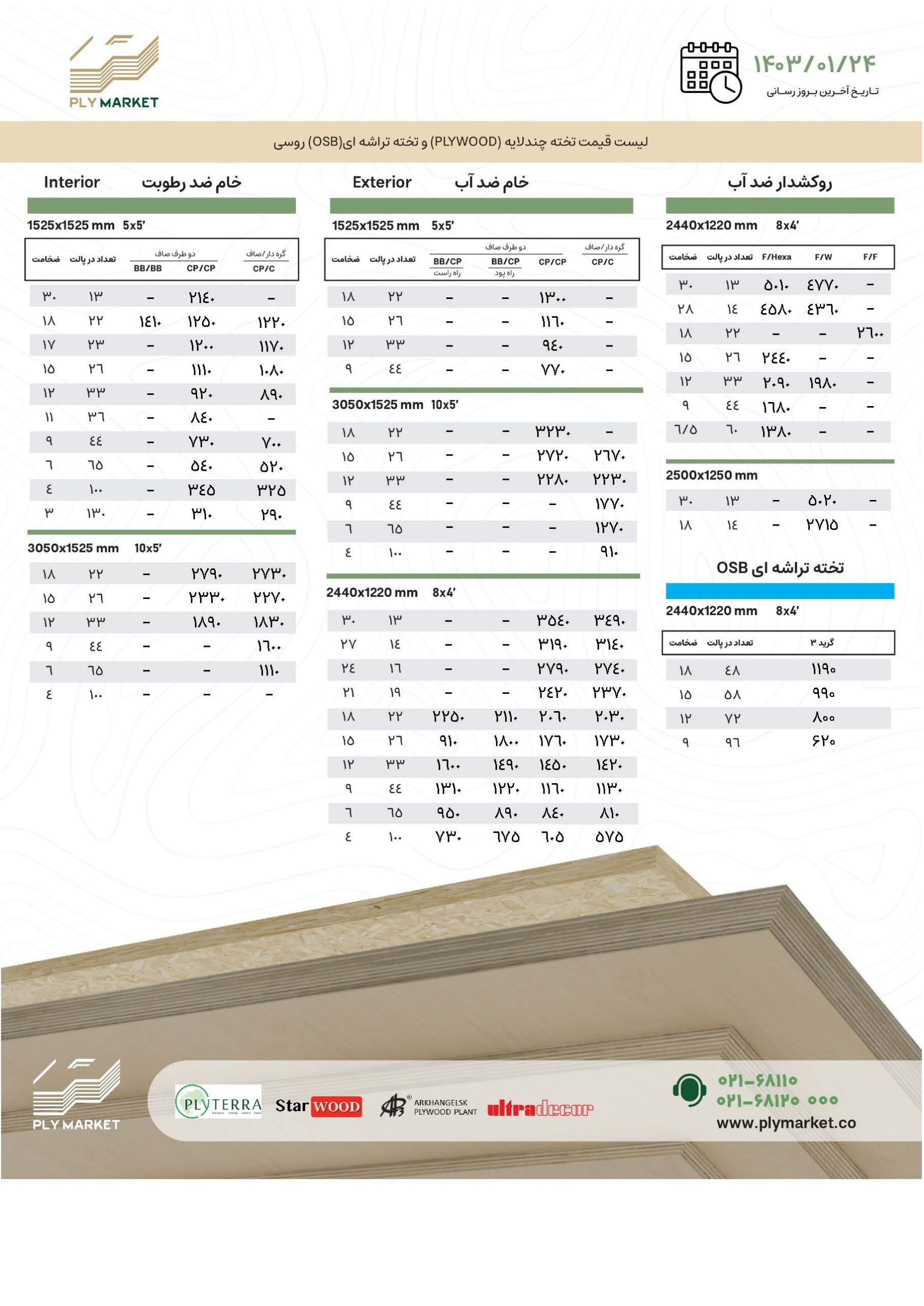Concrete formwork plywood
Formwork with plywood: advantages, types and applications
Formwork with plywood is a light, durable and environmentally friendly system that provides a high-quality final surface of concrete. These molds are made by gluing several special layers together. Molding with plywood is used where there is a need to cover a large surface with a light and durable material. This type of molding is especially preferred for making molds used in concreting in structures. Plywood is usually made of birch, poplar, spruce or pine, but different types of materials are used by plywood manufacturers in different parts of the world.

Advantages of molding with plywood
Plywood has a natural property of absorbing moisture, which leads to a spongy effect. This causes the panels to move, affecting the weight and mechanical properties of the material and ultimately its life cycle. Its advantages include:
- Provides a high quality final surface of concrete
- Its weight to strength ratio is favorable
- Minimal deflection due to inherent stiffness
- High durability
- Reusable
- Due to the cross-layer structure, plywood panel cutting is almost twice that of solid wood
- Standard machining and fastening methods
- Easy transportation on site
- Good chemical resistance
- Wide range of finishes and sizes
- Having ecological importance

Different types of panels
Panels are typically used in two waysAs formwork panels or as formwork liners. Formwork panels not only transfer the desired texture and pattern to the concrete surface, but also provide the necessary strength and stiffness to keep the concrete fresh. Form liners can only transfer the desired texture and pattern to the concrete.
There are different types which are:
- Film-coated plywood: Film-coated plywood is a common panel. The surface film is paper impregnated with glue or resin. Formwork board with film coating has more resistance to wear, moisture penetration, chemicals and fungi. They have a smooth and hygienic surface and are easier to clean.
- HDO plywood: HDO molding panels stand for high density overlay, meaning high density overlay, which have more resin in the overlay. Their surfaces are harder and more impervious to water and impact than MDO molding panels. A smoother surface can be expected on concrete when using HDO.
- MDO plywood: MDO stands for medium density overlay, which is much better and of course more expensive than the surface film for ordinary laminated plywood. The quality concrete surface results from MDO’s ability to cover imperfections and reduce the transfer of wood grain to the concrete surface. The result of using a medium density coating is a uniform color and a smooth surface that is ideal for painting or coating.
- Veneer-Layered Plywood: Veneer-Layered Plywood is the cheapest of the three types. To make molding easier to use, people print some kind of glue or oil on the back or top of plywood with wood veneer during production.
- Specialty Plywood: Specialty plywood molding panels with specialty finishes are also available. Covering materials include laminated plastic, epoxy resin, metal and plastic reinforced with glass fibers (fiberglass). Metal and fiberglass overlays may also add to the strength and stiffness of the panel.

Comparison of plywood with plastic mold
Choosing between plywood and plastic molding is made easier by comparing the benefits of each one. Understanding the pros and cons of both types will help you make an informed decision. This comparison also helps answer important questions that are part of the planning process in construction projects. Here are some advantages of molding board over plastic molding.
Heat resistance: Weakness of plastic molding
Plastic moldings have a very low heat tolerance threshold. Plastic as a material is prone to melting due to heat. Even though it is combined with fiberglass, its heat resistance is not as high as plywood. Therefore, at high temperatures, plywood molding is definitely a better option.
Load bearing capacity: The superiority of molding with plywood
When it comes to load bearing capacity, between plywood and plastic moldings, the answer is clear. Plywood is a stronger option for structures that need to bear high loads.
Saving money: The economic advantage of molding with plywood
The cost of supplying plastic materials and making moldings with it is significantly higher than plywood. Smaller structures in particular benefit from using plywood instead of plastic formwork. Plywood can be sourced locally to make formwork at a much lower rate than plastic.
Conclusion:
Plywood formwork is used to form or pour concrete into forms. Due to the features of the plywood, it is resistant to weather and does not stick to concrete. This formwork is made of thin layers of wood glued together and is very strong and it is less likely to break. It is ideal for outdoor applications as it is highly resistant to moisture, warping, rotting and splitting.

